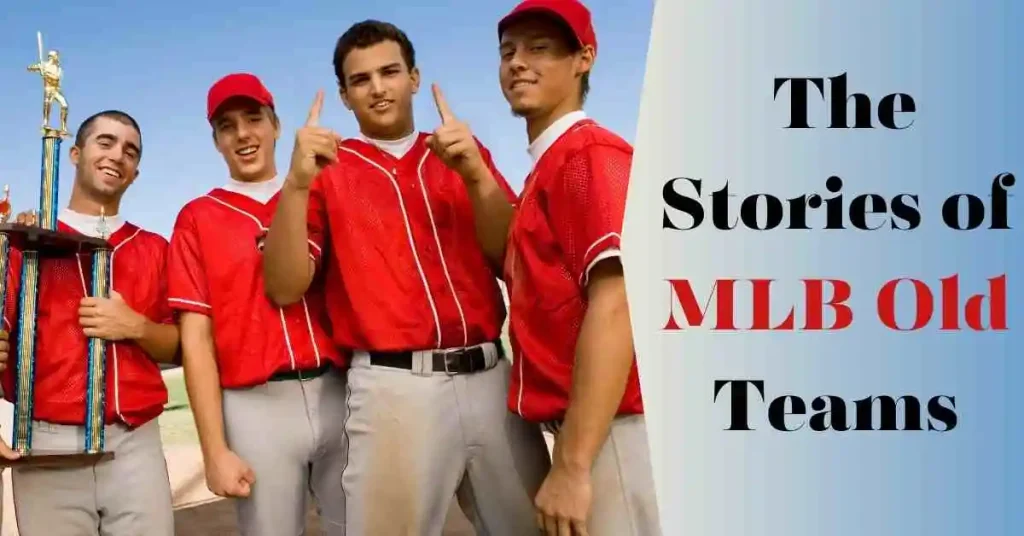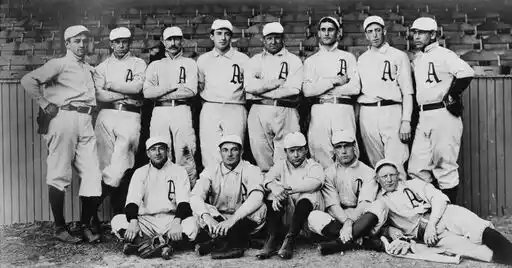
Baseball is not just a game in America; it’s a time-honoured tradition. Answering the question about where their favourite teams stem from, fans across the world gather each season. The oldest MLB teams still play an integral part in the culture of the sport, with a legacy of a little over 100 years. From early ballparks to iconic uniforms, these teams are the foundation of Major League Baseball’s history. In this article, we will be delving into the oldest Major League Baseball team, going over MLB teams oldest to newest teams, and answering common questions regarding the historic origins of baseball.
The Origins of Professional Baseball in America:
Professional baseball history began in 1876, the year the National League was founded, and is traced to Major League Baseball (MLB). But there had been professional baseball in various forms long before this date. It’s the teams that began in the 1800s and made it to today that are especially interesting in showing how the game has transformed. Several of the oldest baseball franchises helped pave the way for the league’s expansion and its present-day popularity.
Who Was the First MLB Team?
1869: Cincinnati Red Stockings – Generally considered the first entirely professional MLB team. The original team broke up in its own time, but its legacy lives on in today’s Cincinnati Reds. Their influence continued to help create professional baseball as the organised league we know today. The Red Stockings barnstormed the country, introducing fans to a new level of organised play.

The Oldest Team in MLB — What They Can Do to Come Full Circle:
Chicago Cubs:
The honour of being the oldest team has consistently been under the same name and in the same city belongs to the Chicago Cubs. Now known as the Cubs, in 1876 the franchise was founded as the Chicago White Stockings. The Cubs have survived through world wars, depressions, and league expansions. Their home at Wrigley Field, built in 1914, is one of the oldest stadiums still standing.
Discover the Evolution of MLB Teams Throughout History
The original MLB baseball teams includes franchises such as the Chicago Cubs, Boston Red Sox, and the Cardinals. They have undergone relocations, name changes, and stretches of celebration and hardship, but they have always been a major part of baseball’s story.
What Are the Oldest 10 Major League Baseball Teams?
Major league fans frequently wonder who the original MLB teams were. Here’s one list by founding date and continuous operation:
- Chicago Cubs – 1871
- Atlanta Braves – 1871 (as Boston Red Stockings)
- St. Louis Cardinals – 1882
- Pittsburgh Pirates – 1882
- Cincinnati Reds – 1882
- Philadelphia Phillies – 1883
- San Francisco Giants — 1883 (as New York Giants)
- Los Angeles Dodgers – 1884 (as Brooklyn Dodgers)
- Chicago White Sox – 1900
- Boston Red Sox – 1901
All played critical roles in the development of a competitive and passionate game in Major League Baseball.
The Oldest MLB Franchise and Its Impact:
The Braves have always ended up being the Oldest MLB Franchise When It Comes to the Spotlight. They have played in every Major League Baseball season since 1871, starting in Boston, then moving to Milwaukee, and finally to Atlanta making them one of the first few teams in MLB.
MLB Oldest Teams and What They Mean Today:
The oldest MLb franchises are far more than a historical footnote. They also carry decades of storylines, rivalries and traditions into modern baseball. The series between the Cardinals and Cubs, for instance, is steeped in history and bad blood, and it attract fans from multiple generations with tension and drama. Pairings like this keep the game’s history relevant in today’s world.

Understanding MLB Team Average Age:
Franchise age is a big discussion point in sports, but you have to wonder what is the average age of MLB teams in recent years. This metric varies from season to season but typically hovers around 27 to 29 years old. MLB teams, especially veteran clubs, tend to have a higher average age, a characteristic that can affect performance, leadership, and injury risk.
Timeline of MLB Teams Oldest to Newest:
To appreciate how far the league has come, though, here’s a timeline of the MLB teams, from oldest to newest. The American League was formed in 1901, following the founding of the National League in 1876. Little by little, MLB expanded throughout the country in cities like New York (1962), Toronto (1977) and Arizona (1998).
Conclusion:
These are living legacies, not museum pieces. They’ve helped define the rules, the style, and the soul of the game. Every franchise in Major League Baseball, from the most senior club and all of its 104 seasons to the expansion teams of today, contributes to the pageant that makes the game ever-expanding. So, whether you are a die-hard Cubs fan, knowing the tree trunk that grew Major League Baseball is an experience that will pay more dividends as we forge toward the future of the game.
FAQs:
Which is the oldest Major League baseball team still present today?
The Chicago Cubs, which were founded in 1871, are the oldest continuous Major League Baseball team in the same city.
What was the first fully professional MLB team?
The first fully professional baseball team was the Cincinnati Red Stockings in 1869.
How many of the original MLB baseball teams still exist?
Just a few teams have roots in the original National League and American League structures, and most have moved or changed names.
What is the average age of MLB teams?
The average age of MLB teams usually falls between 27 and 29 years old, depending on the season and team strategy.
What franchise has moved locations the most?
The Braves have been in Boston, in Milwaukee and in Atlanta, but they are the oldest MLB franchise to have played every season since its founding.
